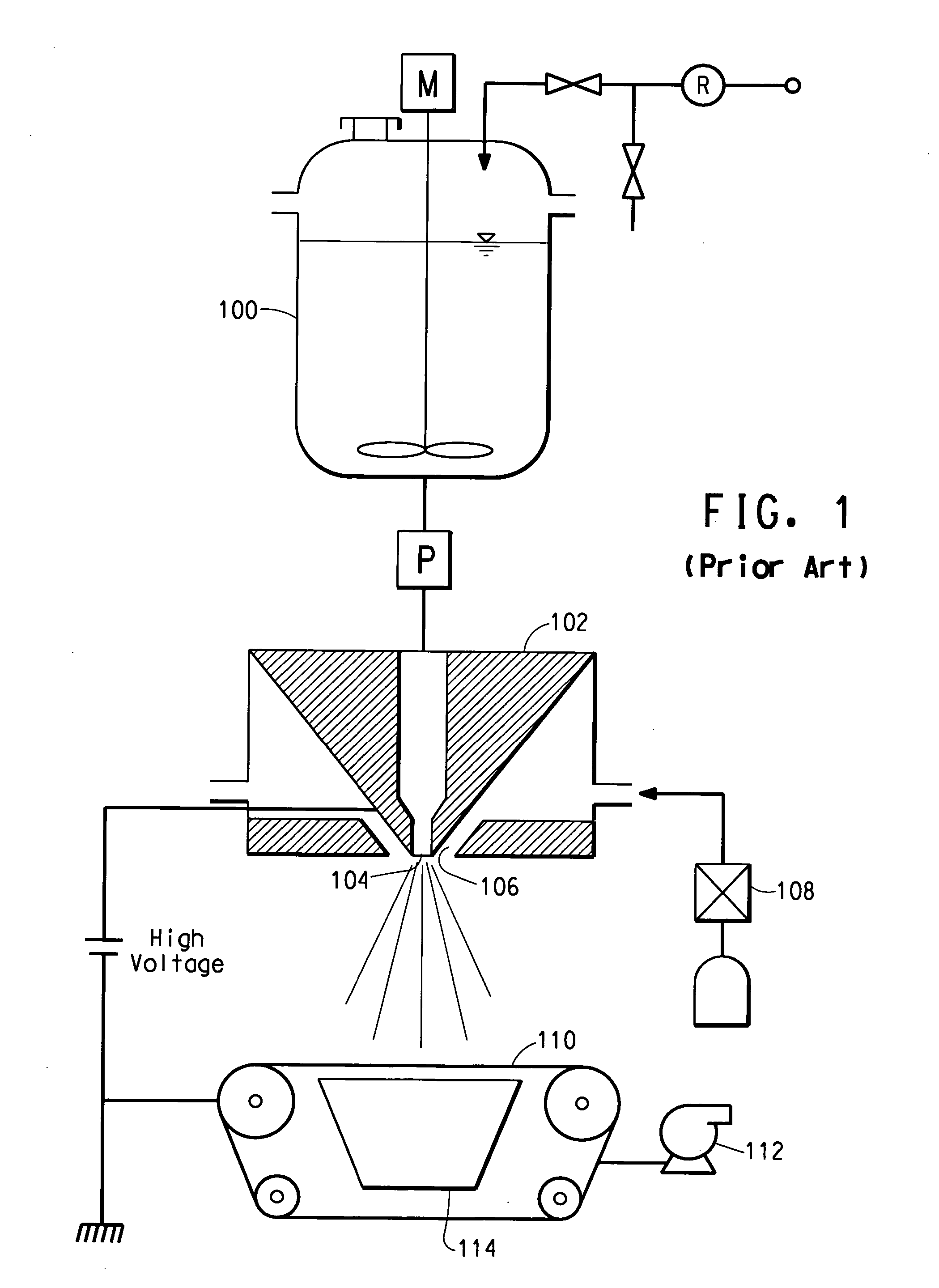Filtration media for filtering particulate material from gas streams
a technology of air filtration media and gas stream, which is applied in the direction of filtration separation, separation process, other domestic articles, etc., can solve the problems of charge dissipation, current limitations, and loss of filtration efficiency in use of air filter media and media manufactured by wet-laying process,
- Summary
- Abstract
- Description
- Claims
- Application Information
AI Technical Summary
Benefits of technology
Problems solved by technology
Method used
Image
Examples
example 1
[0036] Nanofiber layers were made by electroblowing a solution of nylon 6,6 polymer having a density of 1.14 g / cc (available from E. I. du Pont de Nemours and Company, Wilmington, Del.) at 24 weight percent in formic acid at 99% purity (available from Kemira Oyj, Helsinki, Finland). The polymer and solvent were fed into a solution mix tank, the solution transferred into a reservoir and metered through a gear pump to an electroblowing spin pack having spinning nozzles, as described in PCT Patent Publication No. WO 03 / 080905. The spin pack was 0.75 meter wide and had 76 spinning nozzles. The pack was at room temperature with the pressure of the solution in the spinning nozzles at 10 bar. The spinneret was electrically insulated and applied with a voltage of 75 kV. Compressed air at a temperature of 44° C. was injected through air nozzles into the spin pack at a rate of 7.5 m3 / minute and a pressure of 660 mm H2O. The solution exited the spinning nozzles into air at atmospheric pressure...
example 2
[0038] An SN structure was made as described in Example 1, but at a higher basis weight of the nanofiber layer. The resulting structure was challenged at various particle sizes for filtration efficiency, and the results are given in Table 1.
TABLE 1NanofiberNanofiberbasisPressureFrazier airdiameterweightEfficiencyDroppermeabilityEx. No.(nm)*(g / m2)(%)(mm H2O)(m3 / m2 / min)1341 / 387369.93.7372374 / 3625856.422
*first measurement / second measurement
example 3
[0039] A filtration medium having an SNS structure was formed by hand consisting a nanofiber layer having a basis weight of about 3 g / m2 sandwiched between two spunbond layers each having a basis weight of about 21 g / m2 made from bicomponent sheath-core fibers having a sheath of polyethylene (PE) and a core of poly(ethylene terephthalate) (PET). The average diameter of the nanofibers was about 651 nm. The nanofibers were nylon. The Frazier air permeability, the pressure drop and the efficiency of the filtration medium are listed in Table 2.
PUM
| Property | Measurement | Unit |
|---|---|---|
| diameter | aaaaa | aaaaa |
| diameter | aaaaa | aaaaa |
| thickness | aaaaa | aaaaa |
Abstract
Description
Claims
Application Information
 Login to View More
Login to View More - R&D
- Intellectual Property
- Life Sciences
- Materials
- Tech Scout
- Unparalleled Data Quality
- Higher Quality Content
- 60% Fewer Hallucinations
Browse by: Latest US Patents, China's latest patents, Technical Efficacy Thesaurus, Application Domain, Technology Topic, Popular Technical Reports.
© 2025 PatSnap. All rights reserved.Legal|Privacy policy|Modern Slavery Act Transparency Statement|Sitemap|About US| Contact US: help@patsnap.com

